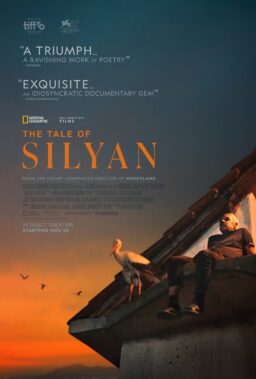My favorite horror movie of this year’s Sundance Film Festival is Natalie Erika James’ terrifying “Relic,” a slow burn genre pic that erupts in a climactic final act that had me fidgeting and squeezing my hands together with anxiety. This is a remarkable debut, a movie that deals with a common theme of Sundance 2020 (dementia) in a way that feels new and daring. It is not only our bodies and minds that will destroy us but when our loved ones leave us behind to face the demons on our own that damns us in the end. Most of all, James has made a stylish, eerie project that turns the haunted house story on its head – it is the failure of our own minds and bodies that will haunt us most of all.
Edna (Robyn Nevin) has gone missing. She lives alone in a relatively remote country home and she’s in her eighties, so there’s reason for concern. When her daughter Kay (Emily Mortimer) arrives with Edna’s granddaughter Sam (Bella Heathcote), something seems just a bit off, but there’s still no sign of where Edna has gone. Still, a chair out of place, strange sounds in the walls, and then some truly foreboding dreams add to a rising sense of dread, which actually amplifies when Edna returns as if nothing has happened. But she doesn’t return exactly right. It’s not just the strange bruise on Edna’s chest that has her daughter and granddaughter on edge. Is she possessed? Has she lost grasp of her senses? Is it just dementia or something worse?
James allows her film to play out like an old-fashioned haunted house movie, tightening the screws through strange shadows under doors and creaking sounds in the walls. And then she drops the hammer, producing a final act that had me sweating, followed by an epilogue that’s open to interpretation and daringly strange. On the way out of “Relic” in Park City people weren’t just talking about effective horror filmmaking that doesn’t rely on jump scares or shaky camerawork to make an impact but what the film is trying to say about generational differences, mental illness, and acceptance. The best horror films often work on more than one level, and this is a film that will have people talking when it’s finally released … if they can catch their breath.

Less effective but still interesting is actress Romola Garai’s directorial debut, the creepy and icky “Amulet,” starring Carla Juri, Imelda Staunton, and Alec Secareanu. Unafraid to turn into a true phantasmagoria, Garai’s filmmaking hints at a director whose tastes skew away from your typical horror movie construction. There’s a major twist in “Amulet” that feels a little cheap, but some of the images here are powerful, attaining the strength of ancient folklore about vengeance and justice, but doing so in a way that feels cinematically modern.
Tomaz (Secareanu) is a former soldier dealing with PTSD. We see flashbacks to a time he worked at a checkpoint and befriended a woman there, and it’s implied early that his trauma likely results from what happened there, but Garai withholds the truth about Tomaz’s past until the final act. Until then, we just know that he’s a shell of a man, living on the street because of what he’s done and what’s happened to him.
A kindly nun (Staunton) gives Tomaz purpose when she convinces him to help a woman named Magda (Juri) deal with her aging mother. Mom lives upstairs in a rotting home and, well, she doesn’t seem normal. Magda never lets Tomaz see her, but something is very clearly wrong, and Garai teases out the twists and turns of her story, especially in the relationship between Magda, Tomaz, and whatever is on the top floor.
“Amulet” spins its wheels a few too many times, lacking the momentum of something like “Relic,” and I have to admit to feeling a bit cheated by the main twist in the story. However, there’s imagery in the back half of this film that’s hard to shake as Garai makes what feels like more of a European Horror film in terms of blood, guts, and other fluids. The character work and tension-building didn’t quite work for me, but there are ideas and images here that I won’t soon forget. That’s more than I can saw for a lot of Sundance Midnight movies over the years.












